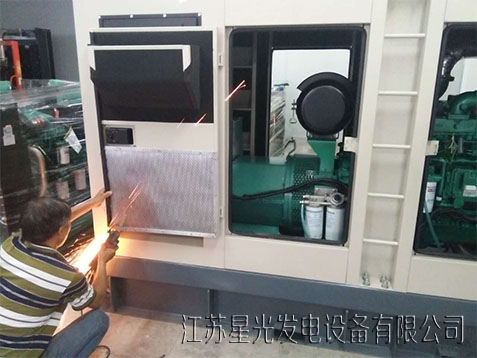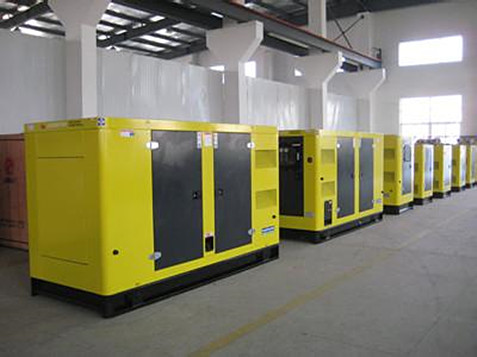Generator is a device that converts mechanical energy into electrical energy for use in an external circuit. At present, generators are widely used in industry and agriculture, national defense, science and technology as well as our daily life.
Generator works by moving electrical conductors through a magnetic field. If your generator doesn’t have magnets, it won’t produce electricity. The magnetic field is created by taking some of the generator output voltage and converting it to DC and feeding it to a coil to make an electro magnet.
Nowadays, the generator degree of automation is high, the control circuit is also complex, thus, some faults may occur when the generator set is at work, which directly affect the normal power supply operation of the unit. So during the normal operation of the genset, except monitoring and analysing the data on system instrument, it is also necessary to observe whether the parameters of the generator on each instrument are within the normal range or not.

Why a generator won’t produce electricity? This is a hot topic that many users care about. Next, I will analyse the reasons for you.
After the unit is running, the generator rotational speed reaches the rated speed, the AC exciter stator excitation circuit switch is closed, the voltage regulator is raised to the maximum direction, at this time, the generator has no output voltage or the voltage is very low. That’s why a generator fails to produce electricity.
1. The residual magnetism of the generator core is disappeared or too weak.
The residual magnetism can be lost naturally when the genset is placed too long or it can also happen from running a generator with no load for too long. However, for the new genset, the residual magnetism can be lost due to a long distance transportation vibration. Thus, it will cause the remanence voltage of generator is disappeared or less than normal remanence voltage value, namely, the remanence line voltage is less than 10V, the remanence phase voltage is less than 6V. Because the stator of synchronous generator, rotor, as well as AC exciter stator, and rotor core are usually folded by adopting 1~1.5mm thick silicon steel sheet. After excitation vibration, the residual magnetism is easy to disappear or weaken. When the residual magnetism is lost, the generator will produce no power at start-up.
2. Excitation circuit wiring error
The polarity of the excitation winding is reversed. After electrifying, the magnetic field produced by the field winding current is counteracted with the residual magnetism, resulting in the disappearance of the remanence. In addition, when measuring the DC resistance of the excitation winding or testing the automatic voltage regulator AVR, without paying attention to the polarity, which will also cause the core remanence to disappear.
3. Excitation circuit is blocked
In the generator excitation circuit, the electrical contact is bad or the wiring head of each electrical component is loose, the lead wire is broken, causing the circuit to be interrupted, and the generator excitation winding has no excitation current.
4. Circuit for DC side of rotary rectifier is interrupted
Due to the interruption of circuit for DC side of rotary rectifier, therefore, after the AC exciter is rectified by the rotary rectifier, the excitation current supplied to the excitation winding can not be sent into the excitation winding, resulting in AC synchronous generator can not generate electricity.
5. AC exciter fault, no output voltage
The generator can’t produce electricity due to AC exciter failure, so that the excitation winding of the AC synchronous generator has no excitation current.
6. Generator excitation winding is broken or grounded, resulting in the generator has no excitation current or the excitation current is minimal.

1. When the residual magnetism of the generator core disappears, magnetizing treatment shall be carried out.
The magnetizing method:For the self-excited generator, usually using extra battery or dry battery, using its positive and negative poles to supply electricity for a short time towards the leading-out terminal of the excitation winding. However, be sure to recognize the polarity of DC power supply and excitation winding clearly, namely, the positive pole of the DC power supply is connected to the positive pole of the excitation winding, and the negative pole of the DC power supply is connected to the negative pole of the excitation winding. If the control panel of diesel generator set is equipped with magnetizing circuit, the toggle switch should be turned to “magnetizing” position, which can magnetize the AC exciter.
2. Excitation circuit wiring error, correct it after searching.
3. Use multi-meter ohm block to find the excitation winding broken line and connect it. For the failure caused by poor contact, polish the surface oxide layer with find sand cloth, the loose connection bolt and nut shall be firm.
4. Ground and broken line fault of excitation winding. Use 500V ohmmeter to check the ground insulation of the excitation winding, find out the ground point, use multi-meter to find out the broken line and restore it.
Hope the above methods can help your restore your generator output power. If it still fails. you need to replace the automatic voltage regulator as it may be damaged.
Maybe you also like Yuchai diesel generator and Stamford generator
Copyright © Guangxi Dingbo Generator Set Manufacturing Co., Ltd. All Rights Reserved | Sitemap
Update cookies preferences